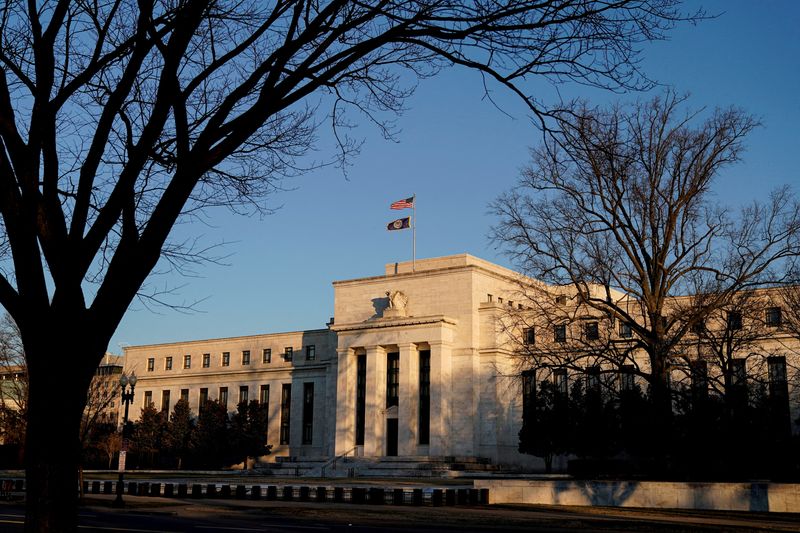Fed’s borrowing is rising
2022.12.09 11:59
[ad_1]

Fed’s borrowing is rising
Budrigannews.com – Market participants are looking for indications that the development could signal trouble in the financial system. Borrowing at a crucial Federal Reserve facility that has long been associated with providing emergency loans to banks has been edging higher, recently reaching over $10 billion for the first time in more than two years.
Concerns are currently low. Some even believe that the growing use of what the Fed refers to as the Discount Window may indicate that the stigmas that banks have long held against an easily accessible source of short-term loans are beginning to fade.
Having said that, if borrowing costs keep going up, it could be a sign of trouble at a time when many people already worry that very aggressive Fed rate increases could cause something to break in the financial system. Additionally, rising usage may indicate a lack of liquidity in the financial sector, which may prompt the Federal Reserve to halt or slow its efforts to reduce its balance sheet.
Since the beginning of the year, when borrowing at the Discount Window was minimal, deposit-taking banks have collectively increased borrowing, albeit not in a straight line. According to Fed data released on Thursday, borrowing has increased since early November and stood at $7.2 billion for the week ended Wednesday. This is a decrease of just under $3 billion from the previous Wednesday, when borrowing exceeded $10 billion for the first time since early June 2020.
The current level of activity is still a shadow of where it was during recent stressors. At the beginning of the coronavirus pandemic in March 2020, discount window borrowing reached a peak of approximately $50 billion. Even that was less than half of the record of $112 billion set in October 2008, when the financial crisis was at its worst.
Analysts say that discount window borrowing is intentionally opaque, making it difficult to draw firm conclusions. Data on total usage are published on a weekly basis; however, the banks that accept loans are only made public after two years. The facility is open to banks that take deposits and has a lot of small banks in it.
Thomas Simons, an economist at investment bank Jefferies, stated, “There really shouldn’t be a reason why discount window borrowing is increasing at all.” He mentioned that banks as a whole have a lot of cash, so they shouldn’t need to ask the Fed for short-term loans, he said.
More European Commission will not unblock aid to Hungary
According to Simons, borrowing could rise to $25 billion to $30 billion by the end of the year without affecting the financial system’s health. However, “would really start to open my eyes and think that we’re entering a period of stress” if borrowing rose to $50 billion.
Barclays analyst Joseph Abate (LON:), The increase in borrowing is strange because it is “uneconomical” in comparison to other options for short-term funding, the company stated in a note to customers on November 30. The essential credit rate currently remains at 4% against a government finances target rate scope of somewhere in the range of 3.75% and 4%, and it costs more to get cash from the markdown window than it would in a few confidential business sectors.
“The expansion in markdown window getting might be an indication that financing pressures are working at the edges of the market,” Decrease composed.
However, some people see the rising use of discount stores in a more positive light, suggesting that the Federal Reserve’s long-standing efforts to encourage use and remove the stigma associated with it may be paying off.
More Cheap stocks and tax losses in USA
“Generally, I would say that it is not a bad thing. According to Bill Nelson, chief economist for the industry group the Bank Policy Institute, “it’s a good thing” because it indicates that the Fed may be succeeding in reducing these stigma issues. Nelson, who worked as a top Fed employee in the past, contributed to the nearly 20-year transformation of the facility.
The Fed has tried for some time to tell banks that they can use the discount window because it helps monetary policy work and calms markets. The Fed has been forced to develop additional lending facilities as a result of the widespread rejection of this liquidity tool. The Fed has been concerned that tapping these facilities could signal trouble for a bank and draw regulators’ attention.
The Fed’s ongoing efforts to reduce the size of its balance sheet may also be affected by rising discount window borrowing. The Federal Reserve is removing liquidity from the financial system, but it will stop when it reaches a level that would make short-term interest rates volatile.
Reserve scarcity may arrive sooner than anticipated if banks are already experiencing liquidity constraints. The Fed could be forced to slow down or stop reducing its $8.6 trillion balance sheet as a result of this.








